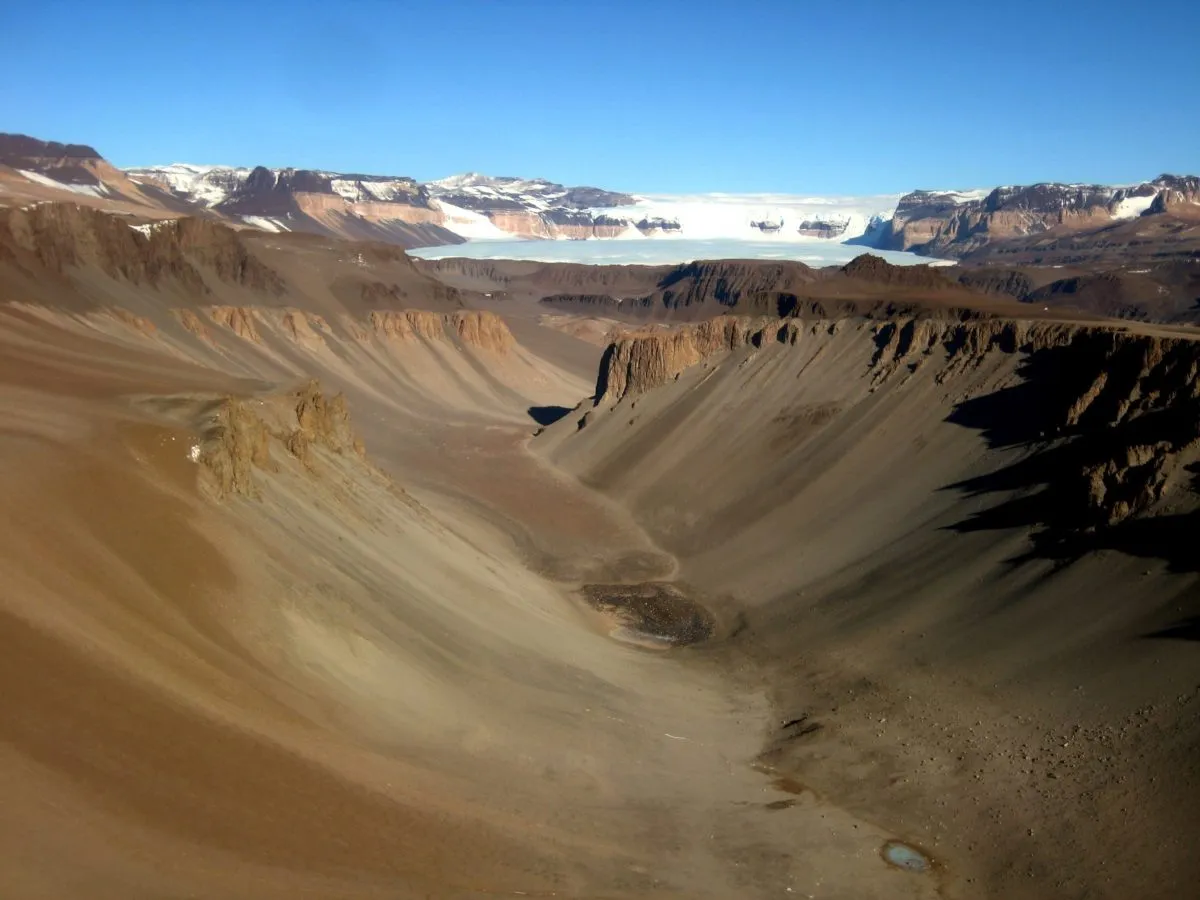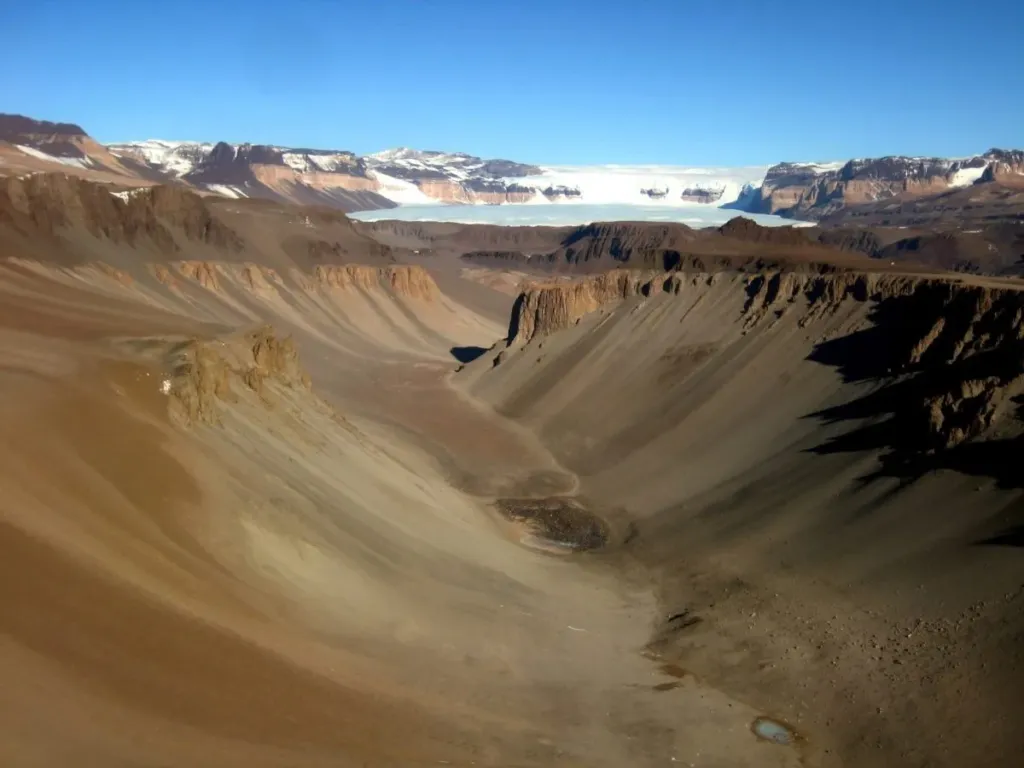Страна:
Регион:
Другие названия:
Значение:
Время визита:
Цена:
бесплатно
Почему Топ:
Largest ice-free area in Antarctica, unique for its dry climate and similarity to Martian conditions. No precipitation has occurred there for millions of years.
Описание:
This region is a series of valleys devoid of permanent ice cover, covering an area of approximately 4,800 square kilometers. The unique climate is created by katabatic winds, which reach speeds of up to 300 kilometers per hour and literally blow away snow and moisture. Frozen lakes such as Lake Vanda and Lake Bonney are found here, as well as the saltiest body of water on Earth, Don Juan Pond. Blood Falls, colored by iron-bearing bacteria, is located in the Taylor Valley. Despite the harsh conditions, microorganisms have been found in the rocks and beneath the ice sheets of the lakes, making this region important for astrobiology. Early explorers believed there was no life here, but modern research has proven otherwise. The area is used as a Mars analogue for testing technologies from NASA and other agencies. Geologically, the valleys consist of granite and gneiss, covered with gravel and moraine deposits. These unique conditions have been preserved for millions of years, making them a natural laboratory for studying the Earth’s climate and evolution.
Факты:
The area is approximately 4,800 km². It is the driest place on Earth. There has been no precipitation for millions of years. Temperatures drop to –68°C. Antarctica’s longest river, the Onyx, is located here. NASA has conducted Mars rovers tests here.
Значение:
Global value, protected under Antarctic Specially Managed Area (ASMA‑2) and Antarctic Treaty.
Категории:
Метки:
Лучшее
Зачем посещать:
Интерес:
Физподготовка:
Лучшее время:
Делать:
photography
scientific research
geological research
Доступ:
Roads:
Open:
Attendance:
Info:
Details:
Visiting is possible only as part of scientific expeditions or special tours.
Safety:
No crime or terrorism, main dangers are extreme cold, strong winds, lack of infrastructure
Clothing:
Warm layered clothing, protective goggles, gloves, windproof jackets
Climate:
Cold desert, extremely dry, strong winds, temperature down to –68 °C
Tips:
Visiting only possible with permits, special equipment required, no tourist infrastructure, important to follow environmental safety rules
Warnings:
Emergency calls via satellite communication or radio with McMurdo Station
Connection:
No mobile network, satellite and radio communication used
- Liechtenstein
- And in Africa the mountains are this high
- Wrangel Island
- Rising prices for travel in Germany in 2025: reasons, scale and consequences
- Monaco
- 12 of the best places to visit in April in Europe: beaches, Easter, cities, and adventures
- Niger
- Unadsdalur Church
- Falkland Islands
- Irkutsk
- Finland
- Qantas и Virgin открывают новые горизонты
- North Coast 500: грандиозный маршрут по Северному нагорью Шотландии
- История легендарного поезда Orient Express
- Chile
- Glorious sea — sacred Baikal
- Cod Wars
- Turtle facts
- Indonesia
- Kamchatka

 France
France
